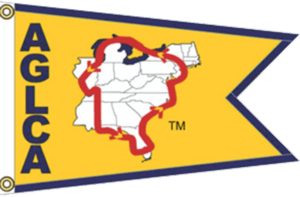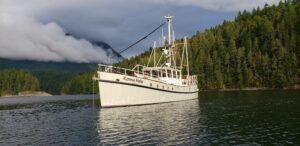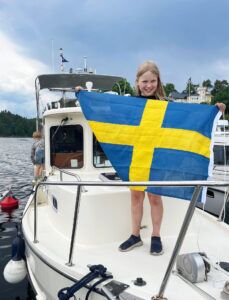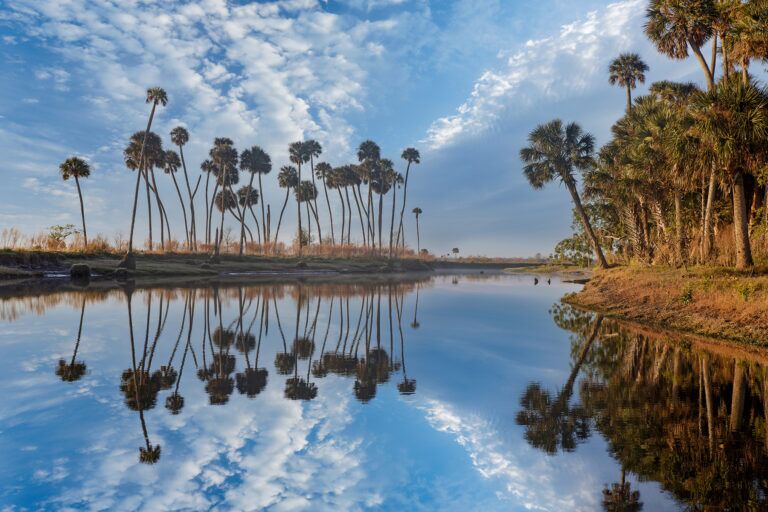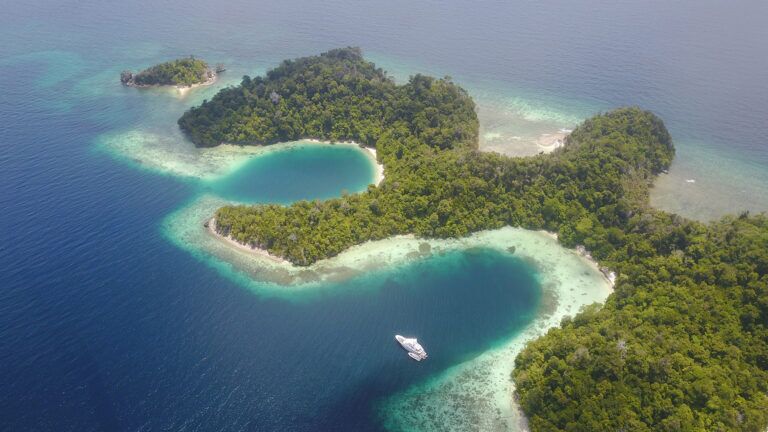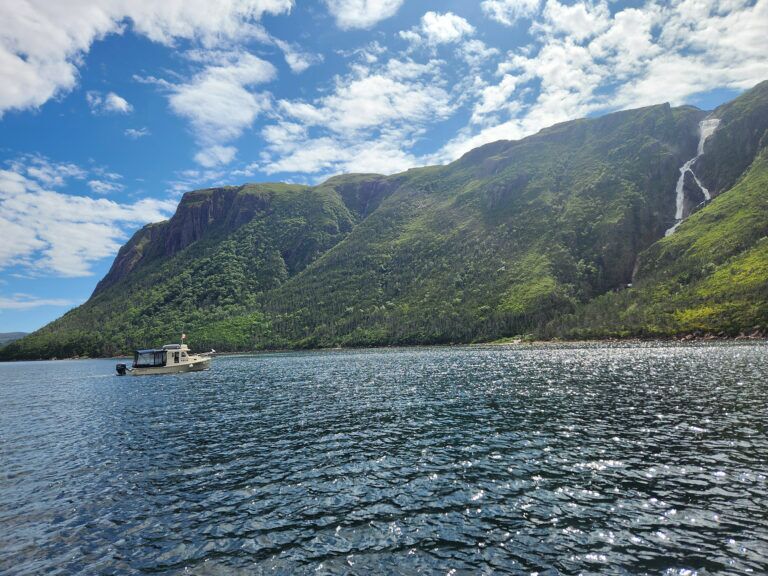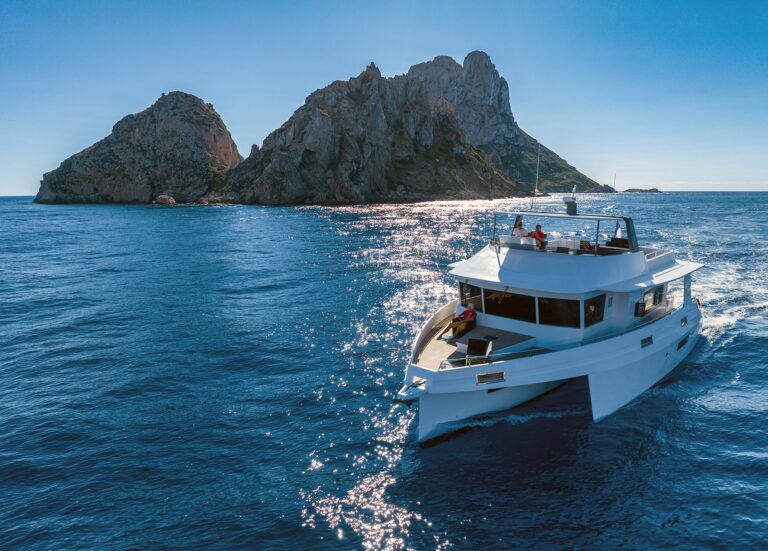Risk and reward are inexorably linked in many areas of life. Nowhere is this truer than in cruising. Reaching some of the world’s most beautiful, unspoiled cruising grounds often involves challenging open-water passages or narrow, difficult channels. It is precisely these risks that make the rewards that much sweeter.
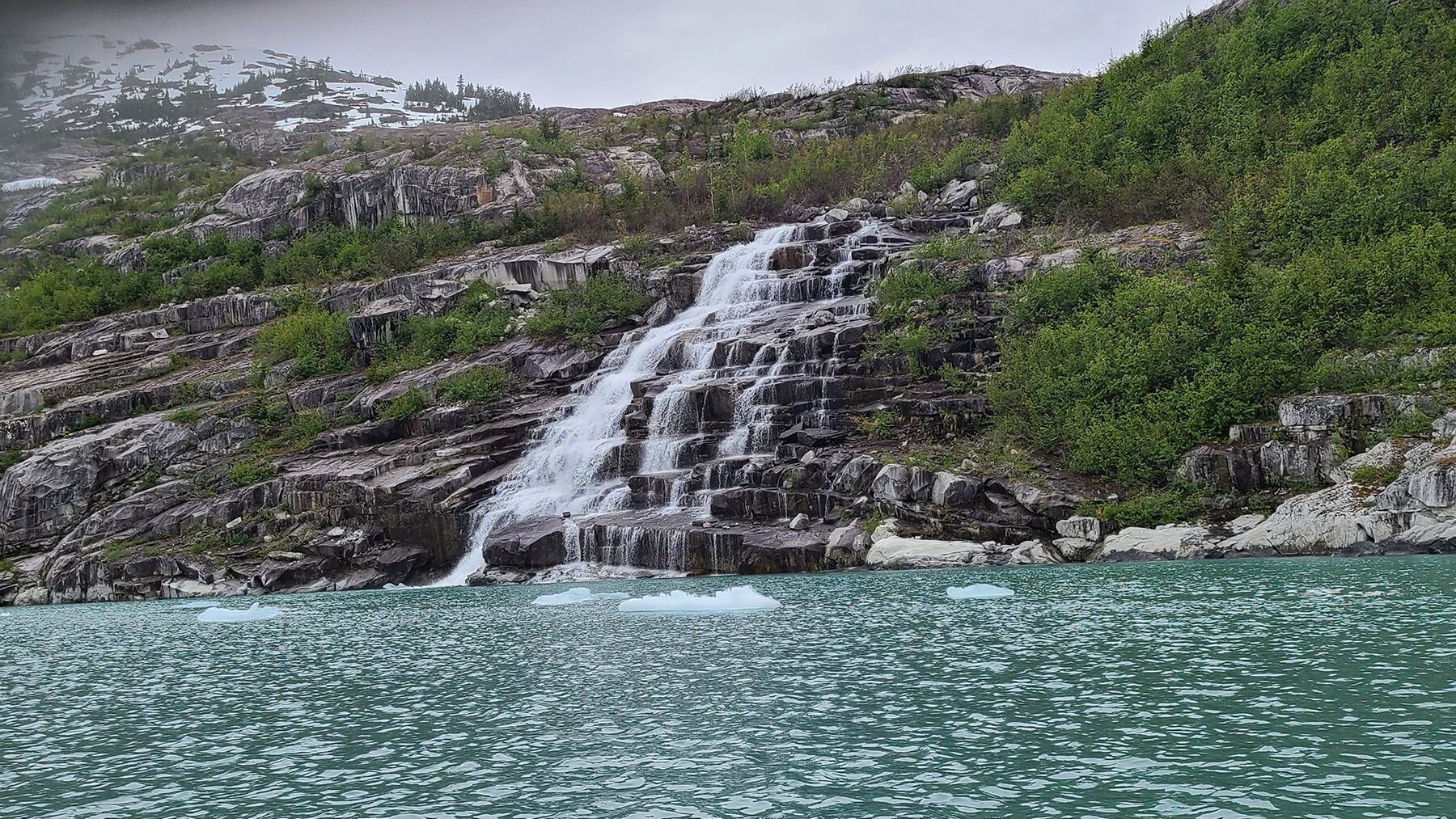
One such place is Prince William Sound and the Kenai Peninsula in south-central Alaska. Getting there from the Pacific Northwest starts with a nearly 700-mile Inside Passage run from Seattle to Ketchikan, Alaska. A good deal of this leg is in relatively low-risk, protected water, but there are a witches’ brew of pitfalls, including tidal rapids, floating logs, the infamously windy Johnstone Strait, and two short but formidable open-ocean passages at Cape Caution and Dixon Entrance. Once you reach Ketchikan, it is another 275 miles to Glacier Bay National Park & Preserve, and Cape Spencer. That’s when the real adventure begins.
My wife, Roseanne, and I took the leap in summer 2022 on our Selene 60, Koinonia. We spent a month in and around Prince William Sound. We could have (and probably should have) spent another month or more exploring the glaciers, tiny harbor towns and beautiful, remote anchorages.
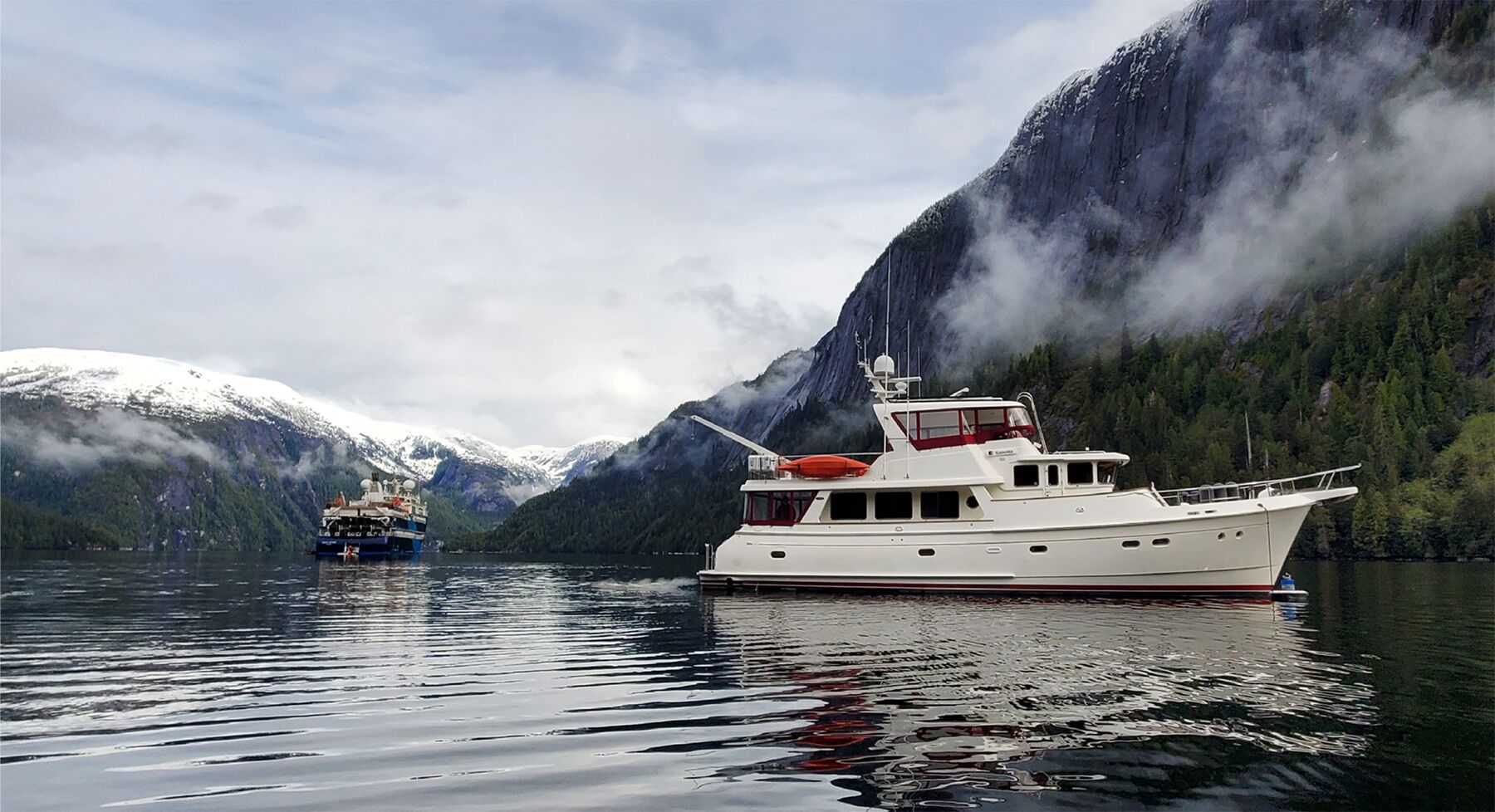
A common staging point for the Gulf of Alaska crossing is the village of Elfin Cove, just inside Cape Spencer. We had intended to make the 37-mile run from the community of Hoonah to Elfin Cove and then spend at least one night preparing for our gulf crossing. However, along the run, I saw that weather conditions were almost ideal for the next two days: light wind over the entire 48-hour passage with about 4 to 5 feet of long southwest swell building during the last day. So, we bypassed Elfin Cove, headed directly around Cape Spencer and then cruised west-northwest toward Prince William Sound.
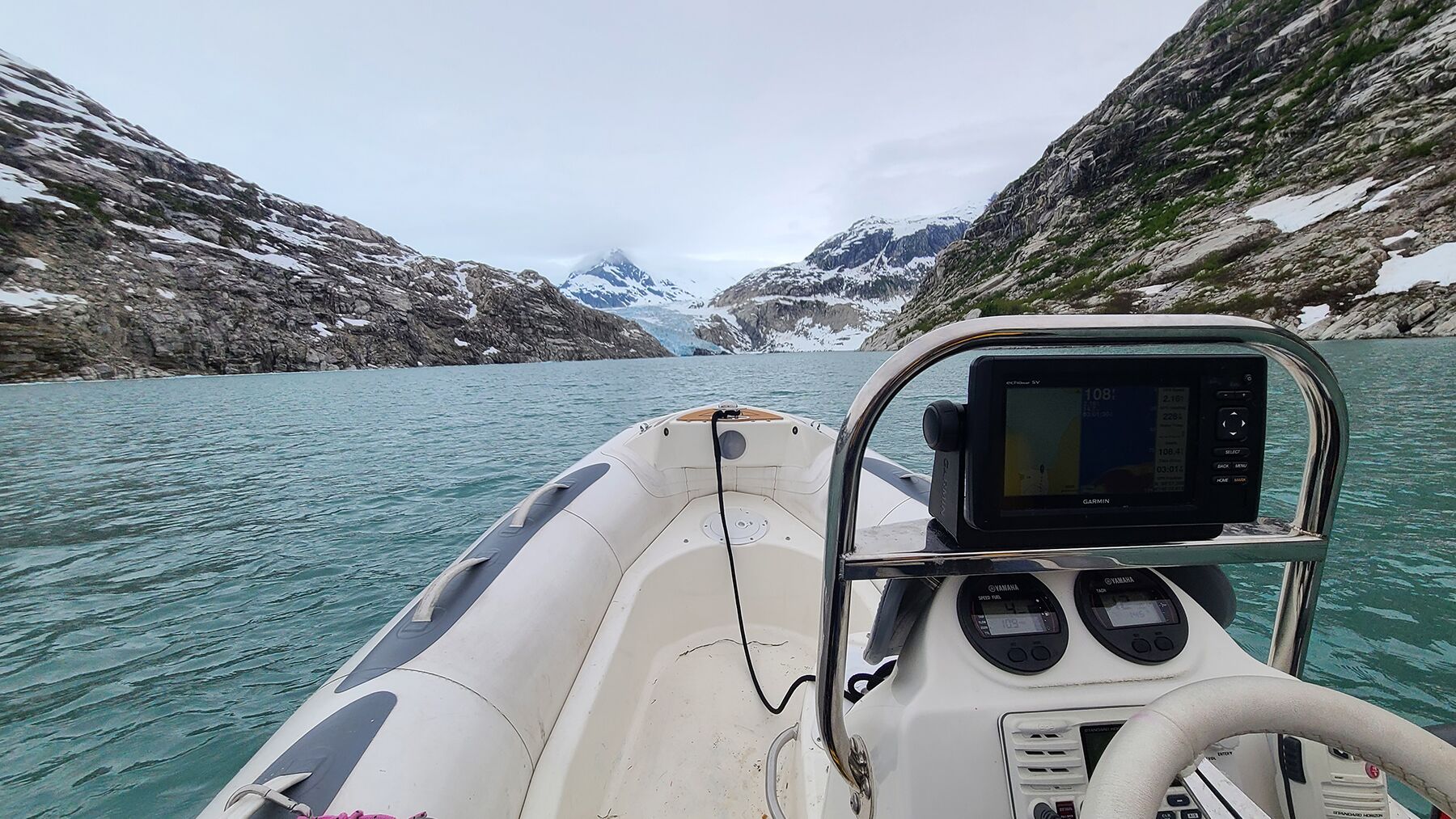
This run includes a roughly 350-mile open-water passage across the Gulf of Alaska. The challenge tends to thin the crowds. The farther you go north and west, the more unspoiled the scenery and more abundant the wildlife. With just two of us on board, watches were generally four hours on and four hours off at night, with a more relaxed schedule during the day. However, at this latitude—about 60 degrees north—it never really gets dark in the summer, so night watches are less stressful. We crossed about three weeks before the summer solstice, so even at midnight, the sun was just barely below the horizon. The cloudless sky was a deep, beautiful orange.
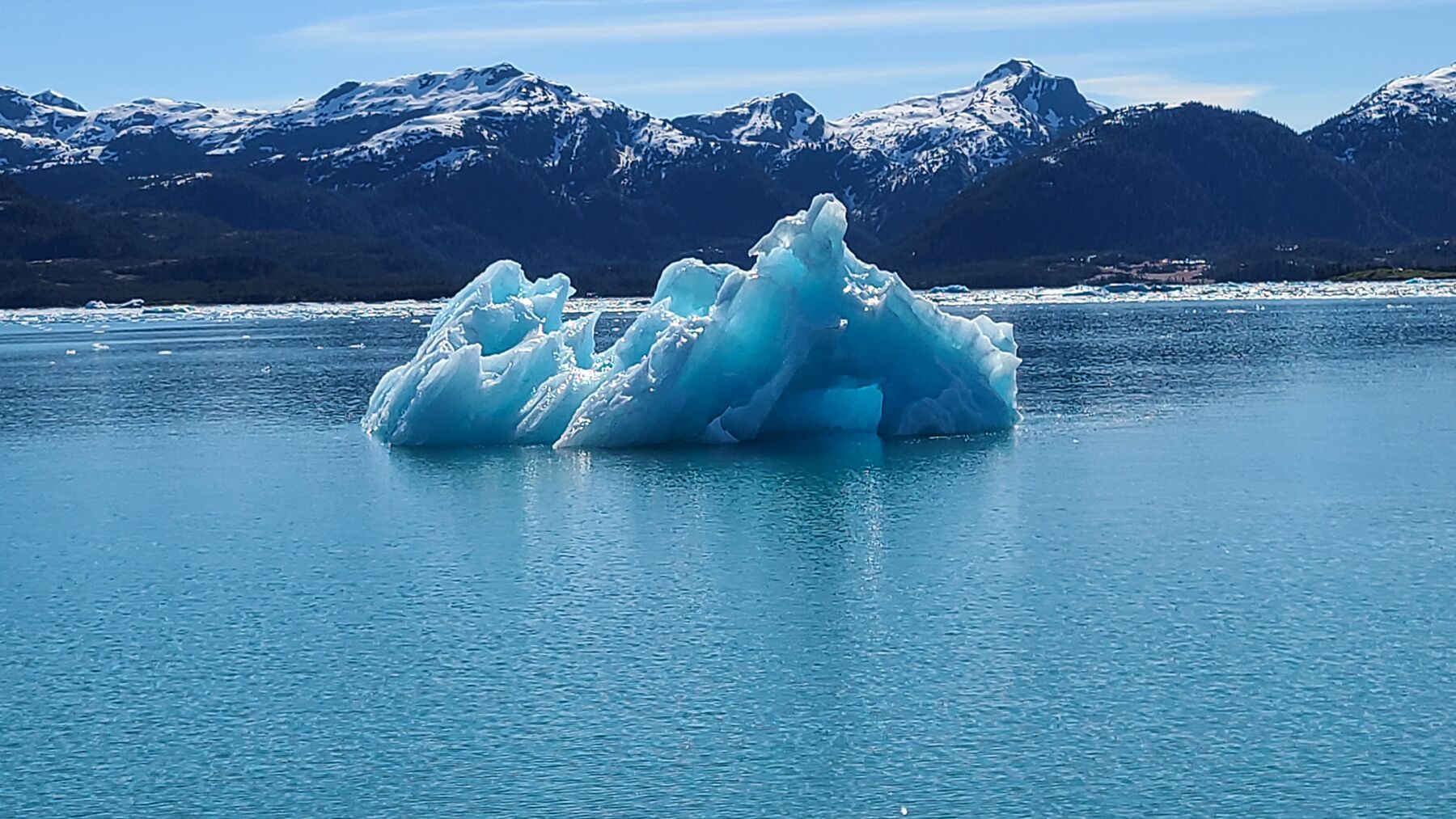
Our first anchorage after the 50-hour passage was Garden Bay on Hinchinbrook Island. We spent a relaxed evening catching up on the sleep we’d missed, and then we started our exploration of Prince William Sound. Shielded by Hinchinbrook and Montague islands at the southern entrance, the sound is generally placid. The protected water extends about 60 miles north to spectacular College Fjord and the city of Valdez. College Fjord includes glaciers named after universities, including Columbia and Harvard. The face of the Harvard Glacier is about 1.5 miles across and often calves huge chunks of ice.
The vast majority of the glacial fjords in Prince William Sound are much too deep for anchoring, so you have to plan anchorages carefully, considering not only depth—often with 15- to 20-foot tidal swings—but also potential ice floes driven by tide and wind. There’s really only one good anchorage in College Fjord, with a couple more in nearby Harriman Fjord. We spent a couple nights anchored behind Coghill Point, about one-third of the way up College Fjord. With all there is to see, we could have spent more time just in this one area.
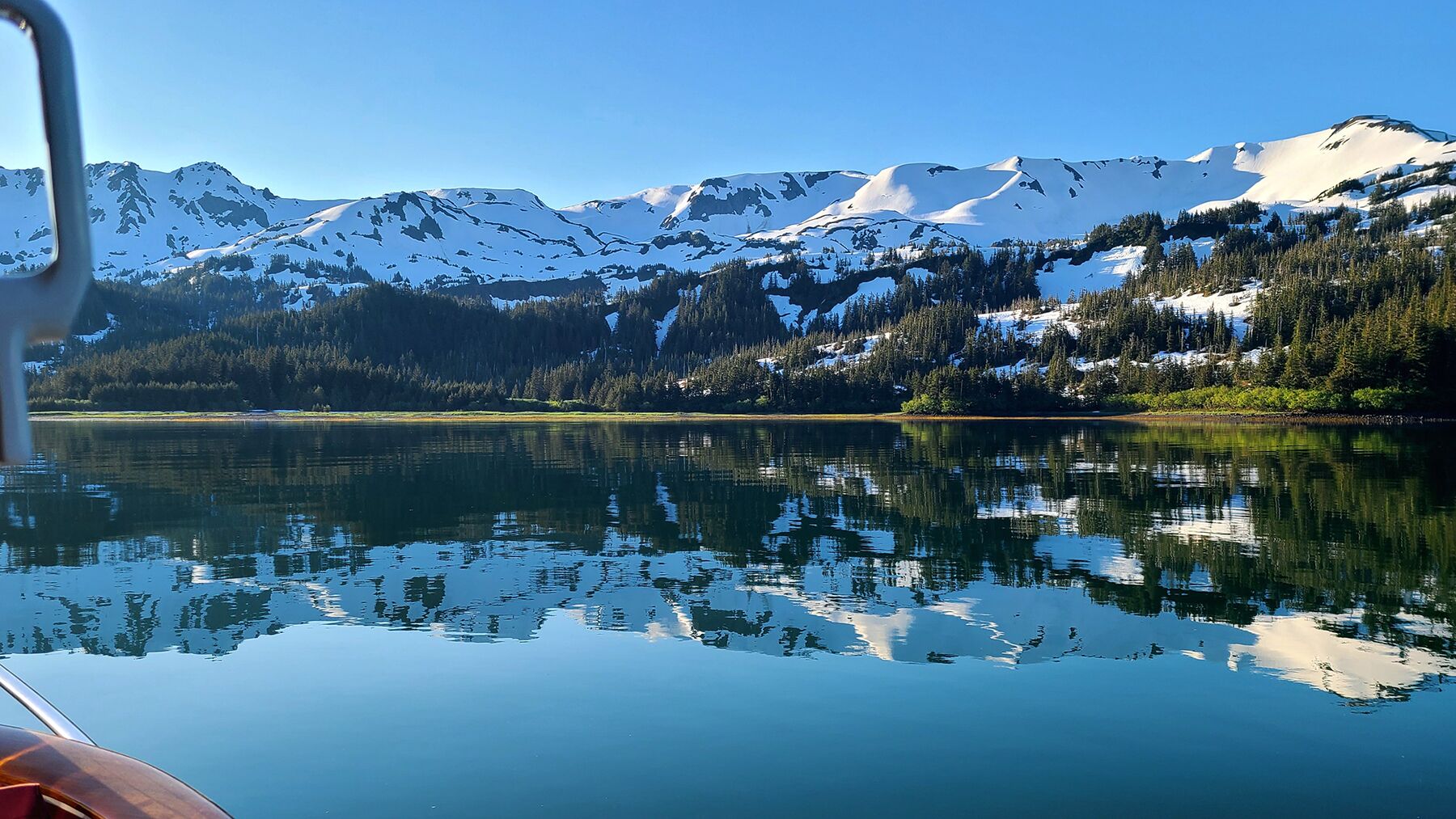
Valdez is the terminus for the Alaska Pipeline and about 25 miles from Bligh Reef, where the Exxon Valdez went aground in 1989, spilling 11 million gallons of crude oil into the pristine waters. Fortunately, Prince William Sound has recovered well, but unfortunately, the Valdez Museum & Historical Archive was closed the days we were there.
Prince William Sound also spans about 90 miles across, from the western city of Whittier to the eastern city of Cordova. (Alaska Airlines operates daily service between Cordova and Anchorage.) There is limited guest moorage in Cordova and we were barely able to squeeze onto the end of a float. When we arrived, it was the start of gillnet fishing season in the nearby Copper River and the marina was noisy all night, so we left the next morning.
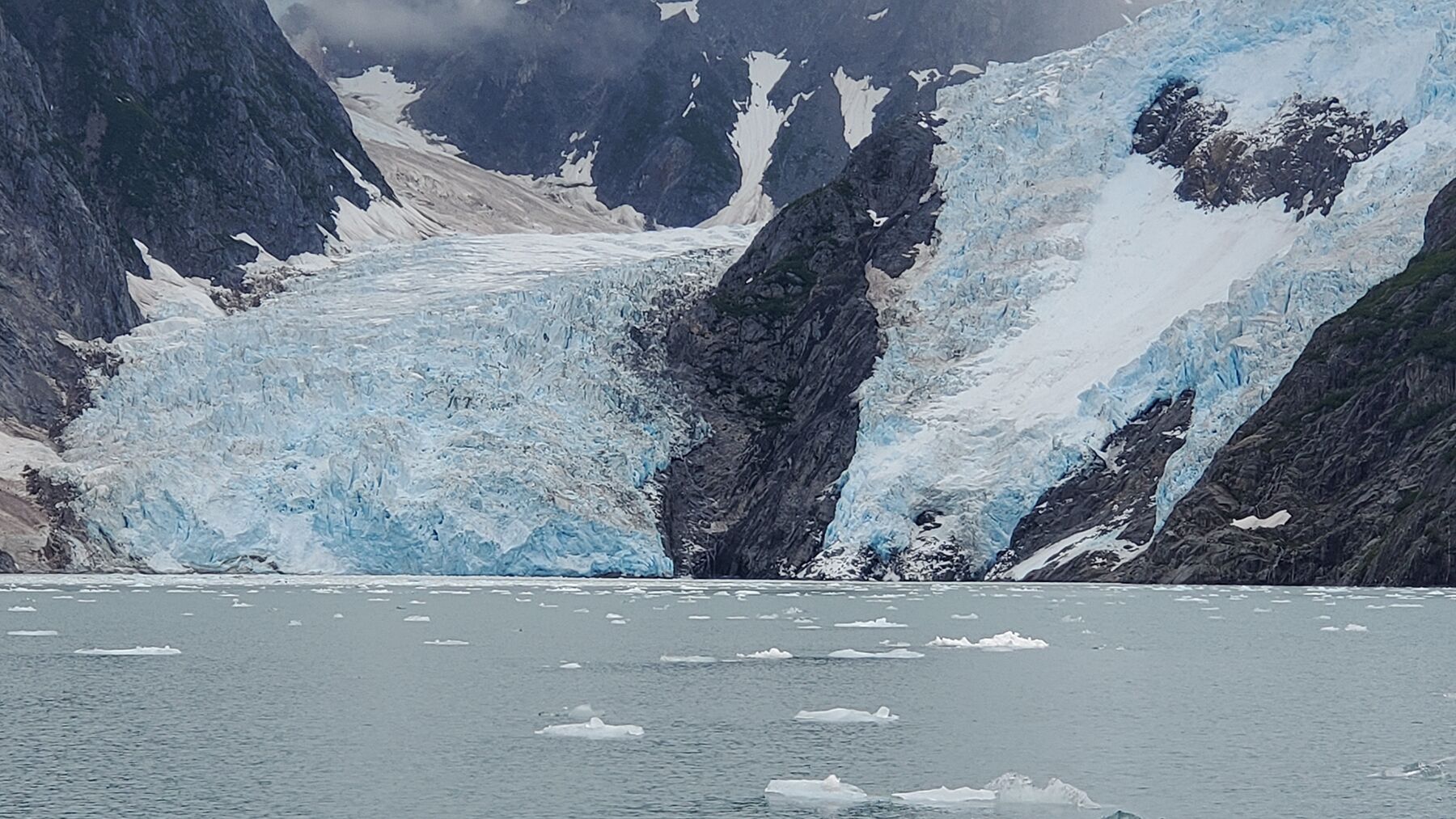
One of my favorite spots at the western end of the sound is Nellie’s Rest anchorage, a dinghy ride from the breathtaking Nellie Juan Glacier. The trip passes a stair-step waterfall that reminded me of Dunn’s River Falls in Jamaica, though about 50 degrees colder. The narrow, shallow glacial moraine at the mouth—a shelf of rock and sand deposited as the glacier recedes—keeps all but the smallest, shallowest-draft vessels out. We wove through the ice-choked entrance without problems in the dinghy, but entering aboard Koinonia would rarely be possible.
After a few weeks exploring Prince William Sound, we ventured farther west. Our goal was to get out to Northwestern Fjord, including a roughly 60-mile haul in open water. The city of Seward, at the head of Resurrection Bay, has excellent services and a large marina with guest moorage. We boarded the Alaska Railroad here for a half-day scenic train ride through the mountains.
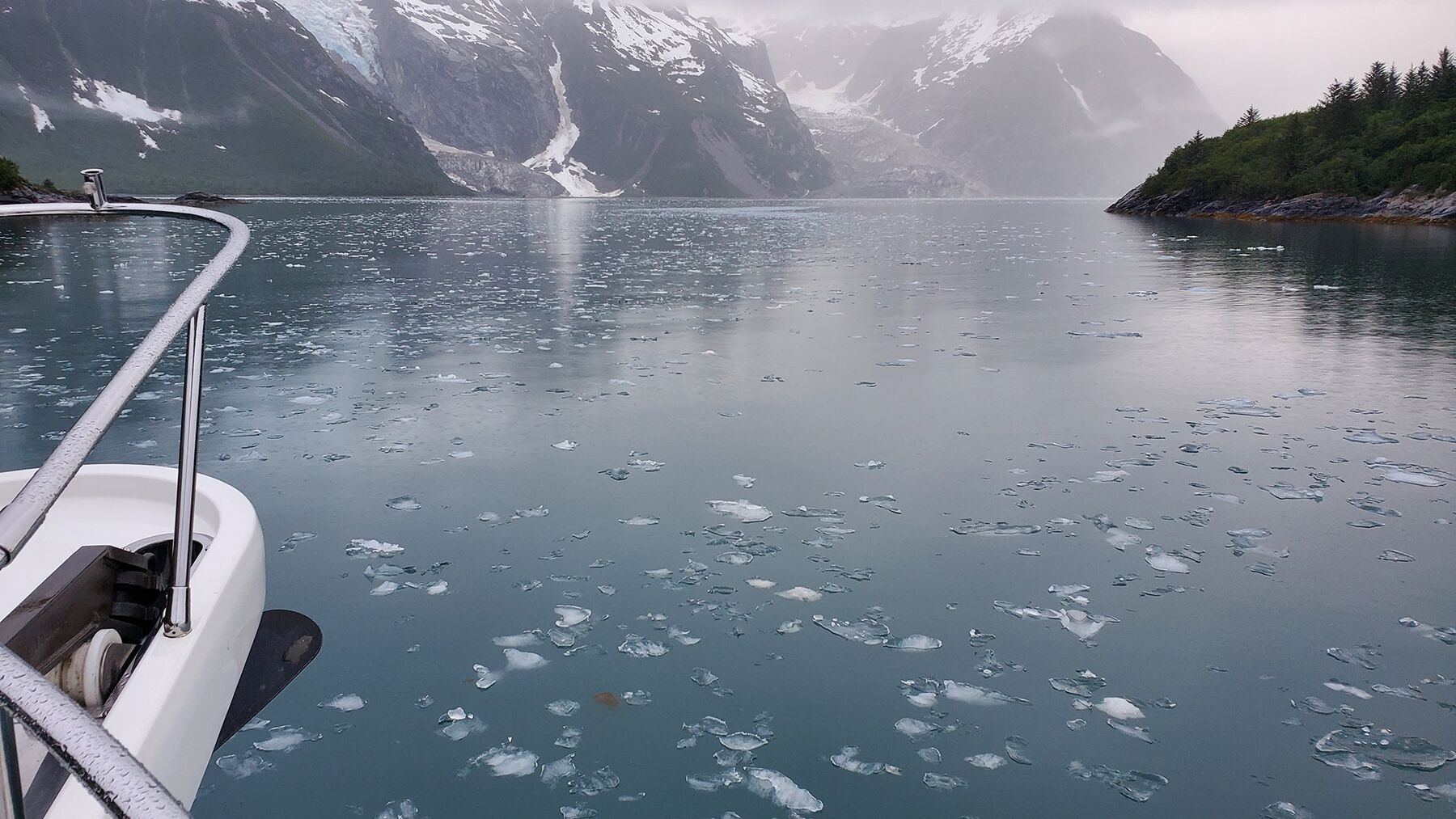
Northwestern Fjord is about 50 miles from Seward, and it gets a couple of tour boats each day, but none of the cruise ships and only a few cruisers. Like many of the glacial fjords in this area, the entrance to this one is protected by a moraine. There can be strong tidal currents, but the water is usually calm inside.
While it rained most of the time we were in Northwestern Fjord, it was still ruggedly beautiful, and one of the highlights of our cruise. The best anchorage in the fjord is only about a mile and a half from the face of a glacier.
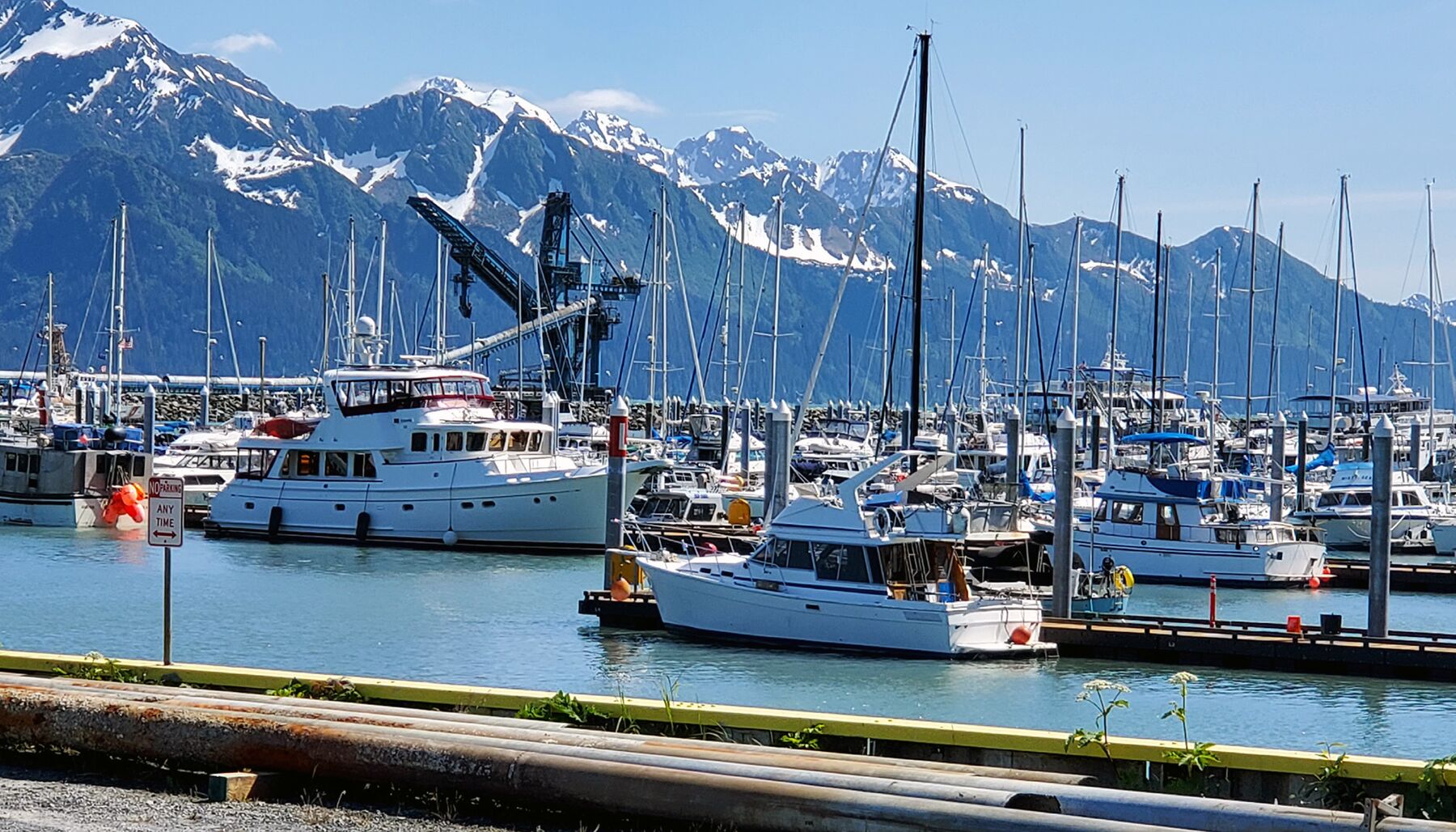
We had a magical encounter with a humpback whale feeding in the bay. I sat for almost an hour in our dinghy, within 100 yards, as it surfaced and fed, totally unfazed by my presence.
We also encountered ice chunks moving slowly past us as the tide changed. Fortunately, the ice chunks were small enough that they posed no threat, but it was eerie to watch thousands of tiny icebergs pass by the boat with the occasional clunk hitting the bow. The ice lasted about an hour, and then it ended just as abruptly as it had started.
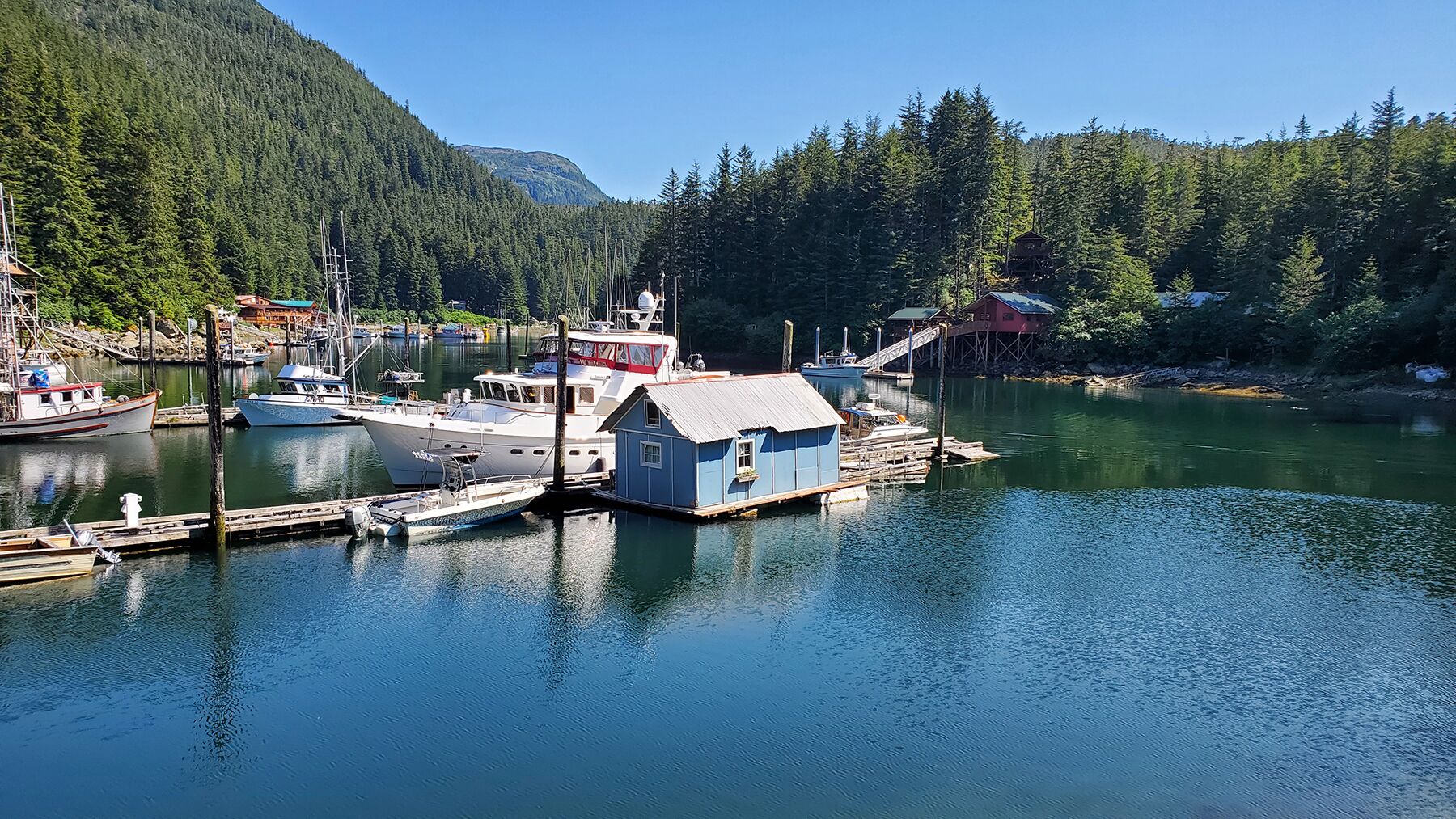
Finally, we started back south, blessed once again with nearly perfect conditions for the two-day run to Elfin Cove. There had been some challenges and risks, but the rewards were worth it.
This article was originally published in the April 2024 issue.



